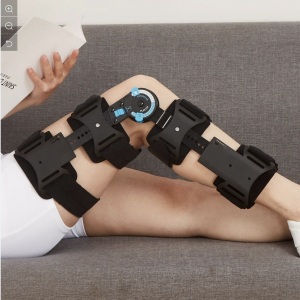🦵 Another ACL Patient Joins the Cross Bracing Protocol
We're aiming for natural ACL healing to become more commonplace!
If you’ve been following our updates over the past year, you’ll know about Patient Number 7 — our first patient to complete the Cross Bracing Protocol (CBP) for a ruptured ACL. Their 3-month MRI showed clear signs of natural ligament continuity, and they’re now progressing through strengthening and return-to-activity rehab without needing surgery.
That success has sparked a lot of interest. We’ve now set up a fast-tracked access system with a specialist to identify and get the right patients into the protocol as quickly as possible — because in these cases, timing really matters. We’re also sharing insights with other physiotherapy clinics who are interested in how the CBP works — it’s exciting to see this approach spreading.
And now, we’ve just introduced another patient into the protocol. We’re looking forward to following their journey and sharing updates as they progress through their rehabilitation.
🆕 Why This Matters
ACL tears have traditionally been viewed as a fast track to surgical reconstruction. But with the Cross Bracing Protocol — a structured, early-intervention bracing method — we’re beginning to see that some ACLs may be capable of healing when given the right conditions.
Patient 7 showed us what’s possible.
Now, with a new patient starting the process, we’re cautiously optimistic — and genuinely excited — to follow their journey.
🔄 A Quick Refresher: What Is the Cross Bracing Protocol?
For the right patient, the CBP offers a non-operative pathway aimed at supporting early ACL healing. Key components include:
Diagnosis within 7–10 days of injury
A “clean” ACL rupture confirmed by MRI
Brace locked at 90°, non-weight bearing for 4+ weeks
Gradual progression in allowed knee range over 8–10 weeks
A 3-month MRI to assess healing
Progressive strength + stability rehab once out of the brace
It’s a demanding process — sleeping in the brace, limited movement, and close monitoring — but for motivated patients, it may open the door to a different kind of recovery.
🙌 What We Learned From Patient 7
Seeing an ACL reconnect and show continuity on MRI — without surgery — was a huge milestone for both the patient and our physio team. It gave us:
Confidence that healing is possible
A real-world example of the protocol working
A foundation for guiding other patients who meet the criteria
And perhaps most importantly, it provided the patient an option that fits their goals and lifestyle without the immediate commitment to reconstruction.
🆕 Our new patient: Starting the Journey
Our newest patient has entered the protocol and ticks the same criteria: early diagnosis, suitable rupture pattern, strong commitment, and a clear understanding of the process ahead.
It’s early days — the brace phase has only just begun — but with the learnings from Patient 7, we’re well-equipped to guide them through the coming months.
We’ll share updates along the way, and with their permission, provide insights into what the process looks and feels like from the patient’s perspective.
⚖️ A Balanced Perspective
To be clear:
ACL reconstruction is still the best option for many athletes, particularly those returning to high-speed pivoting sports such as football, netball, or basketball.
But the Cross Bracing Protocol gives select patients another pathway — one that may offer long-term benefits like reduced osteoarthritis risk, no graft harvest, and potentially lower re-rupture rates in some cases.
For us, it’s not about promoting one option over the other.
It’s about expanding the conversation and helping each patient choose the path that aligns with their goals, timeline, and rehab commitment.
📩 Want to Learn More?
If you or someone you know is dealing with a recent ACL rupture, we’re happy to talk through the options — whether that’s early bracing, surgical preparation, or rehab-first management.

